2,4-Bis(isopropylamino)-6-chloro-1,3,5-triazine
Synonym(s):2,4-Bis(isopropylamino)-6-chloro-1,3,5-triazine
- CAS NO.:139-40-2
- Empirical Formula: C9H16ClN5
- Molecular Weight: 229.71
- MDL number: MFCD00047341
- EINECS: 205-359-9
- SAFETY DATA SHEET (SDS)
- Update Date: 2024-12-18 14:08:52
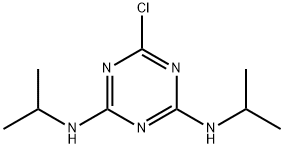
What is 2,4-Bis(isopropylamino)-6-chloro-1,3,5-triazine?
Chemical properties
2,4-Bis(isopropylamino)-6-chloro-1,3,5-triazine is a colorless crystalline solid or powder.
The Uses of 2,4-Bis(isopropylamino)-6-chloro-1,3,5-triazine
2,4-Bis(isopropylamino)-6-chloro-1,3,5-triazine is used to control annual grasses and broad-leaved weeds in milo and sweet sorghum.
The Uses of 2,4-Bis(isopropylamino)-6-chloro-1,3,5-triazine
Herbicide.
Definition
Generic name for a preemergence herbicide containing 80% 2-chloro- 4,6-bis(isopropylamino)-s-triazine.
Agricultural Uses
Herbicide: Atrazine, simazine, and propazine and their common chlorinated degradates have a common mechanism of toxicity. They have similar applications. Propazine is used for control of broadleaf weeds and annual grasses in sweet sorghum. It is applied as a spray at the time of planting or immediately following planting, but prior to weed or sorghum emergence. It is also used as a post-emergence selective herbicide on carrots, celery and fennel. Not approved for use in EU countries. Some formulations are U.S. EPA restricted Use Pesticides (RUPs).
Trade name
GEIGY® 30,028; GESAMIL®; MAXX90®; MILOCEP®; MILOGARD®[C]; MILO-PRO®; PLANTULIN®; PRIMATOL P®; PROPAZIN®; PROPINEX®; PROZINEX®
Safety Profile
Moderately toxic by ingestion. Moderate eye irritation. Questionable carcinogen with experimental tumorigenic data. When heated to decomposition it emits toxic fumes of NOx and Cl-.
Potential Exposure
A potential danger to those involved in the manufacture, formulation and application of this tri- azine pre-emergence selective herbicide used to control annual broadleaf weeds and grasses.
Carcinogenicity
Oral gavage of 46.4 mg/kg to two strains of mice from 7 through 28 days of age, followed by feeding of 102 ppm for up to 18 months, produced no increase in tumors. Subcutaneous injection of a single 1000 mg/kg dose in mice of the same two strains that were observed for 18 months produced no carcinogenic response. Rats were given 0, 3, 100, or 1000 ppm of propazine in the diet for 2 years. At 1000 ppm, there was a significant decrease in body weight in both sexes and an increase in mammary tumors in females.
Environmental Fate
Soil. Undergoes microbial degradation in soil forming hydroxypropazine (Harris,
1967). Dealkylation of both substituted amino groups is presumably followed by ring
opening and decomposition (Hartley and Kidd, 1987). Under laboratory conditions, the
half-lives of propazine in a Hatzenbühl soil (pH 4.8) and Neuhofen soil (pH 6.5) at 22°C
were 62 and 127 days, respectively (Burkhard and Guth, 1981).
Groundwater. According to the U.S. EPA (1986) propazine has a high potential to
leach to groundwater.
Photolytic. Irradiation of propazine in methanol afforded prometone (2-methoxy-4,6-
bis(isopropylamino-s-triazine). Photodegradation of propazine in methanol did not occur
when irradiated at wavelengths >300 nm (Pape and Zabik, 1970).
Chemical/Physical. In aqueous solutions, propazine is converted exclusively to hydroxypropazine (2-hydroxy-4,6-bisisopropylamino)-s-triazine by UV light (λ = 253.7 nm)
(Pape and Zabik, 1970). In acidic aqueous soil-free systems, propazine hydrolysis is pH
dependent and follows first-order kinetics. At 23.5°C, the estimated hydrolysis half-lives
at pH 2.0, 3.0, 4.0 and 5.0 are 9, 36, 141 and 550 days, respectively. The rate of hydrolysis
was also found to increase and decrease in the presence of organic matter and calcium
salts, respectively (Nearpass, 1972).
Shipping
UN2763 Triazine pesticides, solid, toxic, Hazard Class: 6.1; Labels: 6.1-Poisonous materials.
Properties of 2,4-Bis(isopropylamino)-6-chloro-1,3,5-triazine
| Melting point: | 212-214°C |
| Boiling point: | 368.7°C (rough estimate) |
| Density | 1.162 |
| vapor pressure | 0Pa at 25℃ |
| refractive index | 1.6110 (estimate) |
| Flash point: | 11 °C |
| storage temp. | APPROX 4°C
|
| solubility | Chloroform (Heated), DMSO (Slightly), Methanol (Slightly) |
| pka | 2.28±0.10(Predicted) |
| form | neat |
| Water Solubility | 8.6mg/L(22 ºC) |
| Merck | 13,7904 |
| BRN | 747081 |
| CAS DataBase Reference | 139-40-2(CAS DataBase Reference) |
| NIST Chemistry Reference | 1,3,5-Triazine-2,4-diamine, 6-chloro-N,N'-bis(1-methylethyl)-(139-40-2) |
| EPA Substance Registry System | Propazine (139-40-2) |
Safety information for 2,4-Bis(isopropylamino)-6-chloro-1,3,5-triazine
| Signal word | Warning |
| Pictogram(s) |
 Health Hazard GHS08  Environment GHS09 |
| GHS Hazard Statements |
H351:Carcinogenicity H410:Hazardous to the aquatic environment, long-term hazard |
| Precautionary Statement Codes |
P201:Obtain special instructions before use. P273:Avoid release to the environment. P308+P313:IF exposed or concerned: Get medical advice/attention. |
Computed Descriptors for 2,4-Bis(isopropylamino)-6-chloro-1,3,5-triazine
New Products
4-Fluorophenylacetic acid 4-Methylphenylacetic acid N-Boc-D-alaninol N-BOC-D/L-ALANINOL Tert-butyl bis(2-chloroethyl)carbamate 3-Morpholino-1-(4-nitrophenyl)-5,6-dihydropyridin- 2(1H)-one Furan-2,5-Dicarboxylic Acid Tropic acid S-2-CHLORO PROPIONIC ACID ETHYL ISOCYANOACETATE 2-Bromo-1,3-Bis(Dimethylamino)Trimethinium Hexafluorophosphate (6-METHYL-[1,3]DITHIOLO[4,5-b]QUINOXALIN-2-ONE INDAZOLE-3-CARBOXYLIC ACID 4-IODO BENZOIC ACID (2-Hydroxyphenyl)acetonitrile 4-Bromopyrazole 5,6-Dimethoxyindanone 2-(Cyanocyclohexyl)acetic acid 4-methoxy-3,5-dinitropyridine 2-aminopropyl benzoate hydrochloride 1-(4-(aminomethyl)benzyl)urea hydrochloride diethyl 2-(2-((tertbutoxycarbonyl)amino) ethyl)malonate tert-butyl 4- (ureidomethyl)benzylcarbamate Ethyl-2-chloro((4-methoxyphenyl)hydrazono)acetateRelated products of tetrahydrofuran
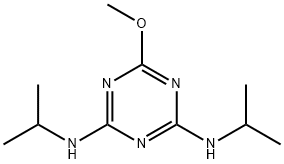
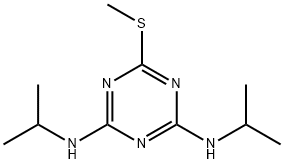
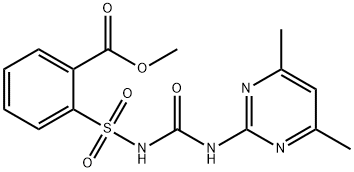
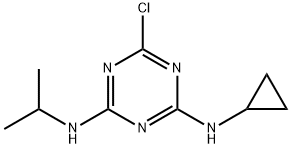

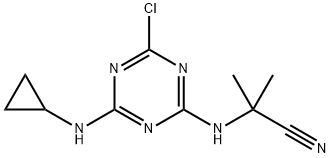


You may like
-
 Propazine CAS 139-40-2View Details
Propazine CAS 139-40-2View Details
139-40-2 -
 2033-24-1 98%View Details
2033-24-1 98%View Details
2033-24-1 -
 1975-50-4 98%View Details
1975-50-4 98%View Details
1975-50-4 -
 2-HYDROXY BENZYL ALCOHOL 98%View Details
2-HYDROXY BENZYL ALCOHOL 98%View Details
90-01-7 -
 2-Chloro-1,3-Bis(Dimethylamino)Trimethinium Hexafluorophosphate 221615-75-4 98%View Details
2-Chloro-1,3-Bis(Dimethylamino)Trimethinium Hexafluorophosphate 221615-75-4 98%View Details
221615-75-4 -
 61397-56-6 CIS BROMO BENZOATE 98%View Details
61397-56-6 CIS BROMO BENZOATE 98%View Details
61397-56-6 -
 14714-50-2 (2-Hydroxyphenyl)acetonitrile 98+View Details
14714-50-2 (2-Hydroxyphenyl)acetonitrile 98+View Details
14714-50-2 -
 118753-70-1 98+View Details
118753-70-1 98+View Details
118753-70-1